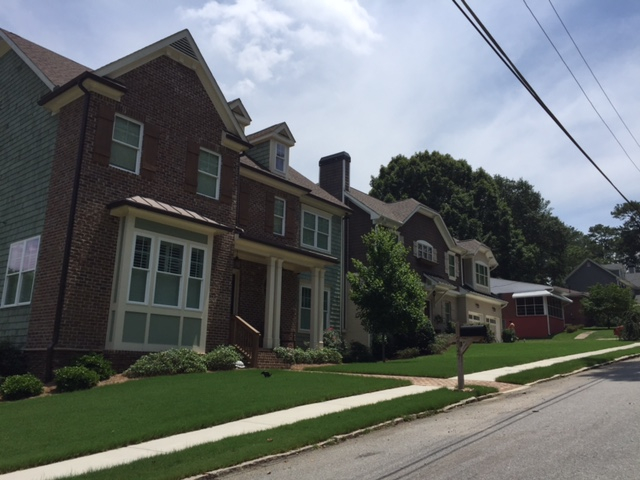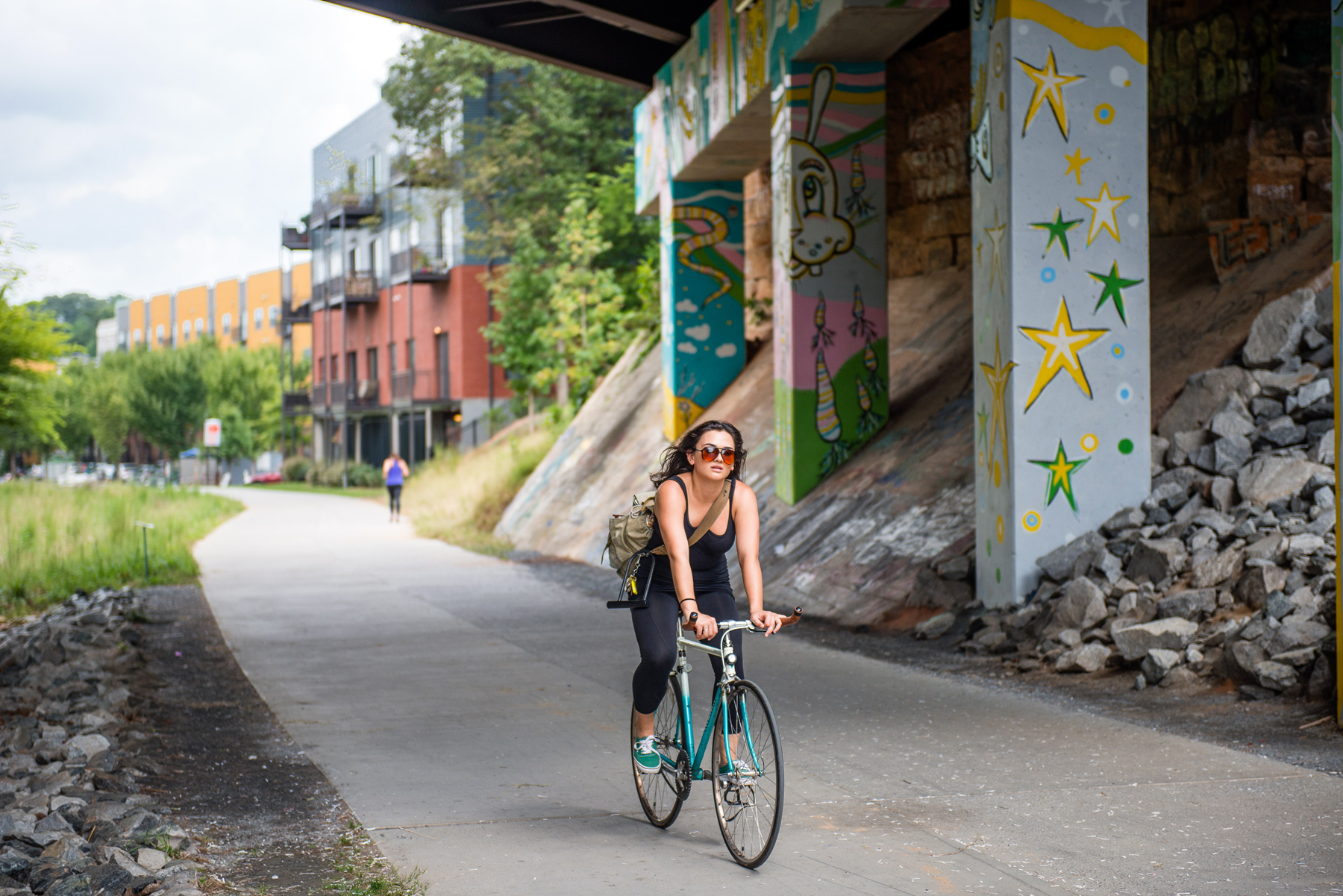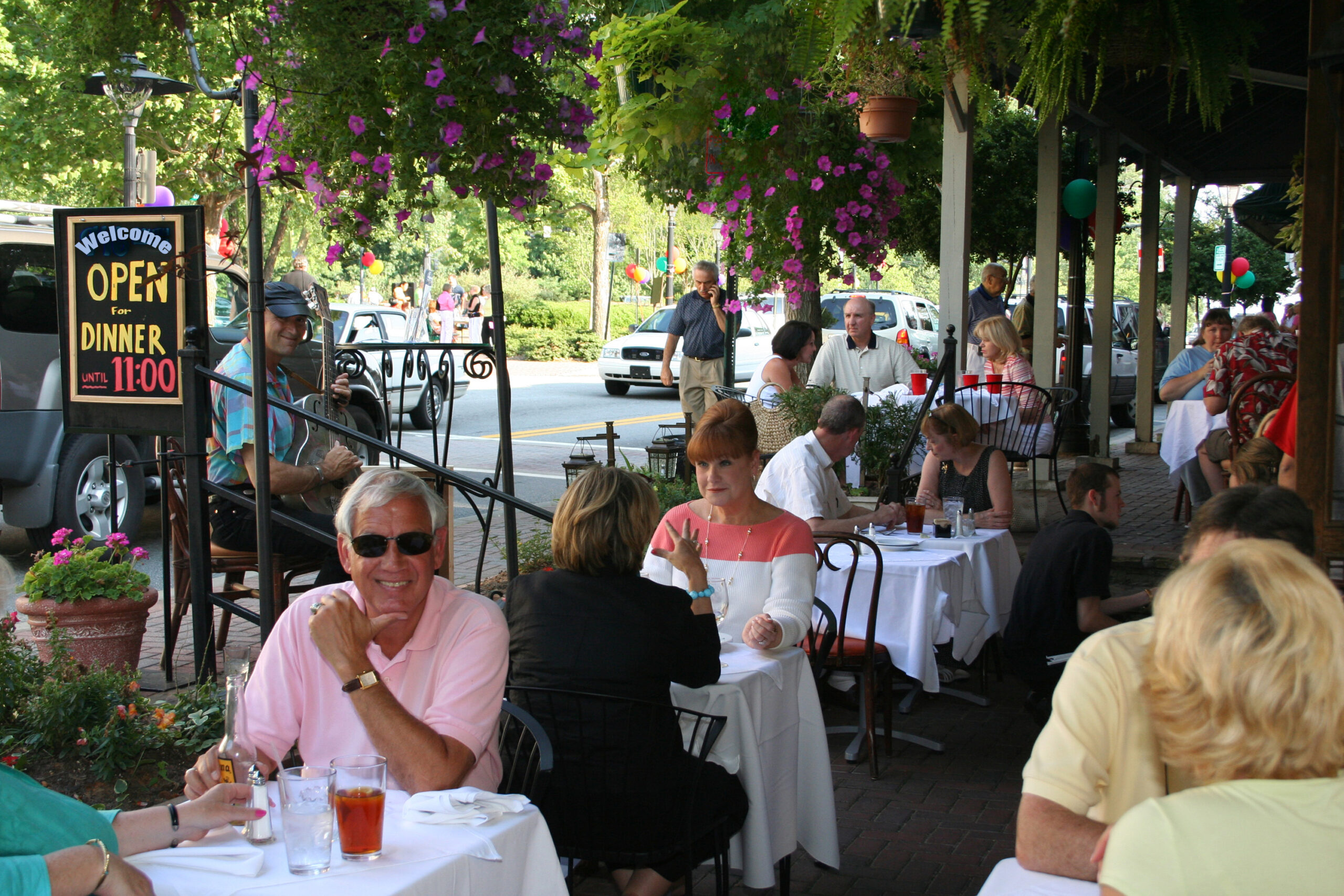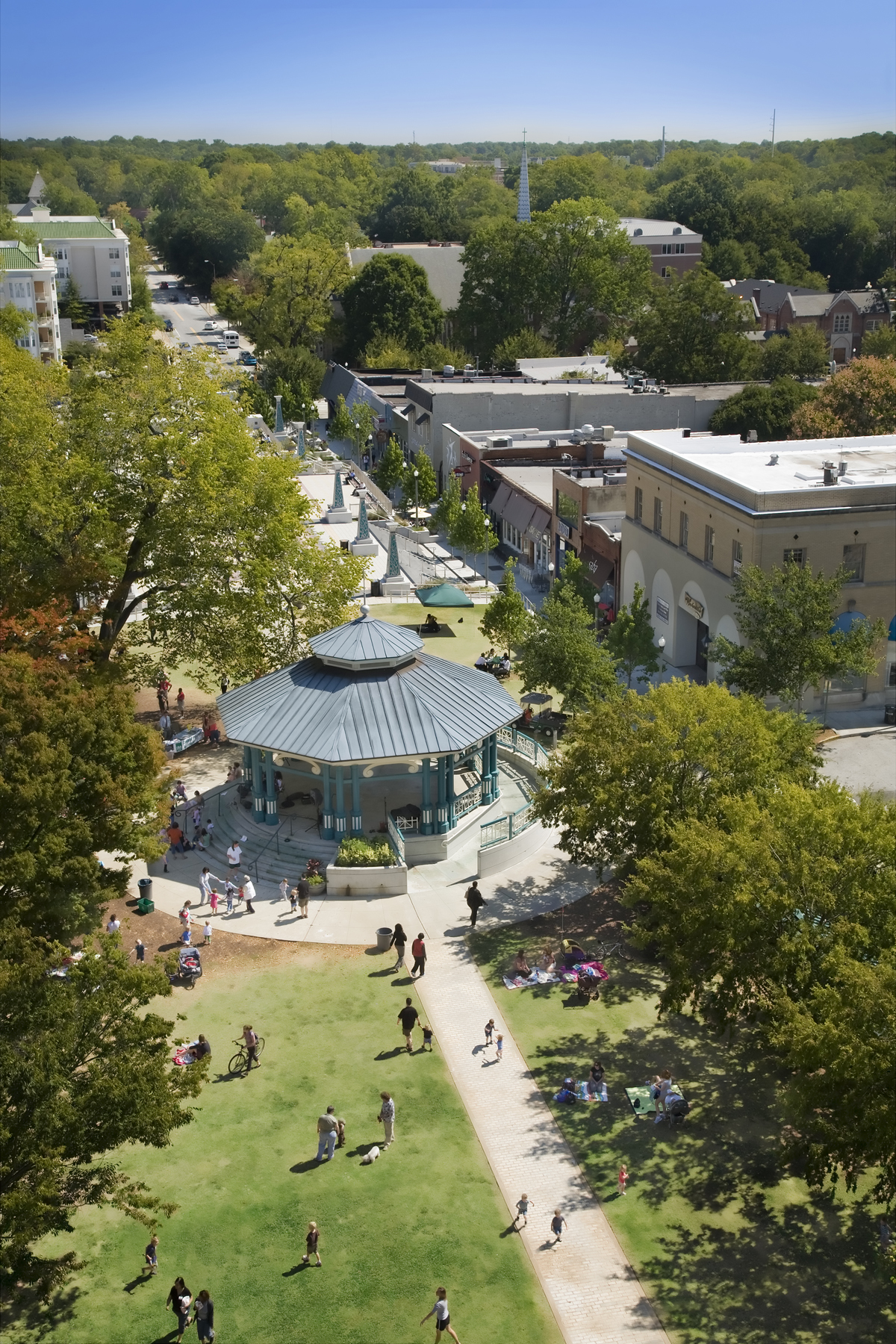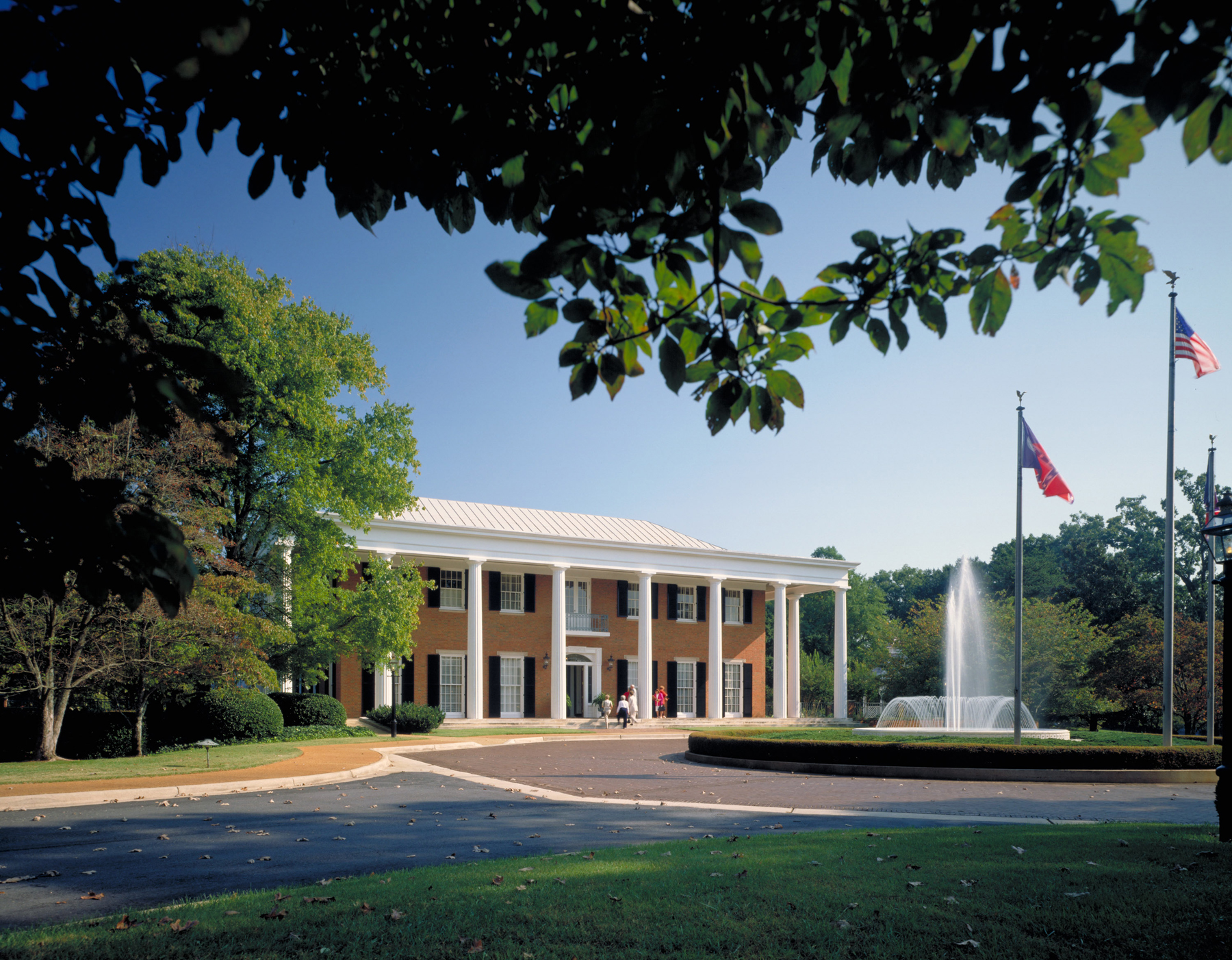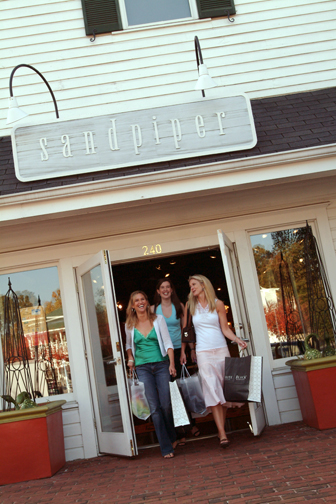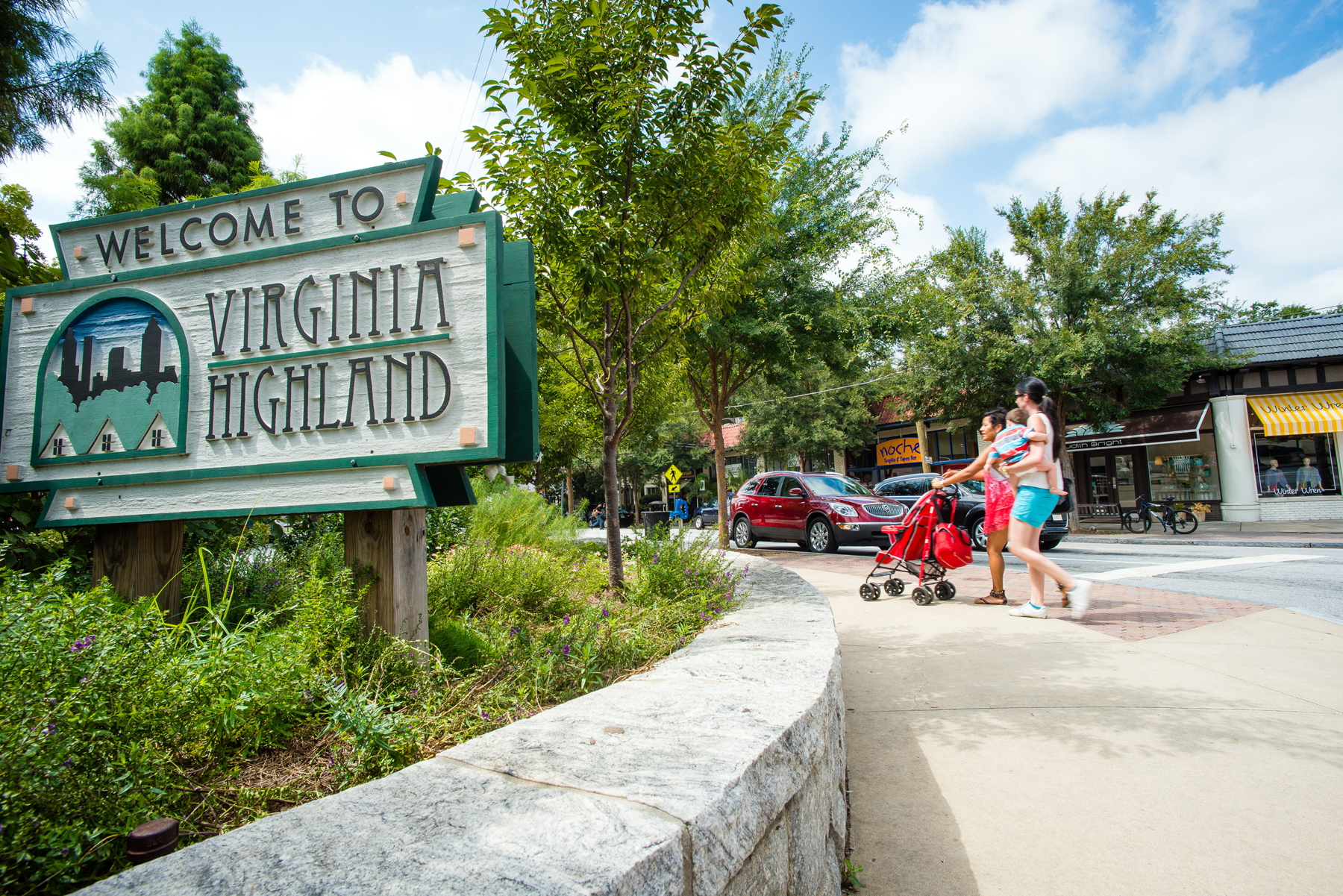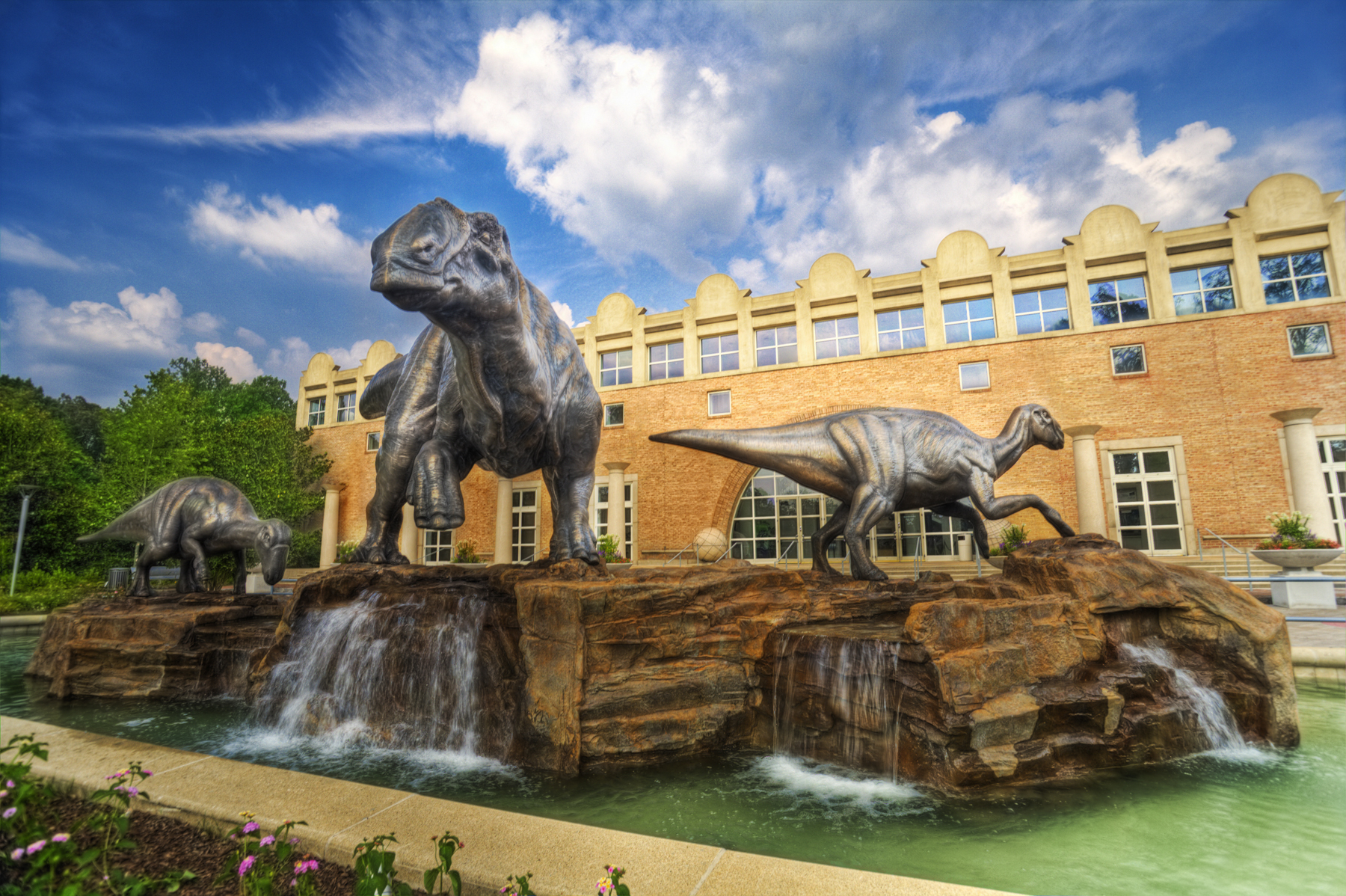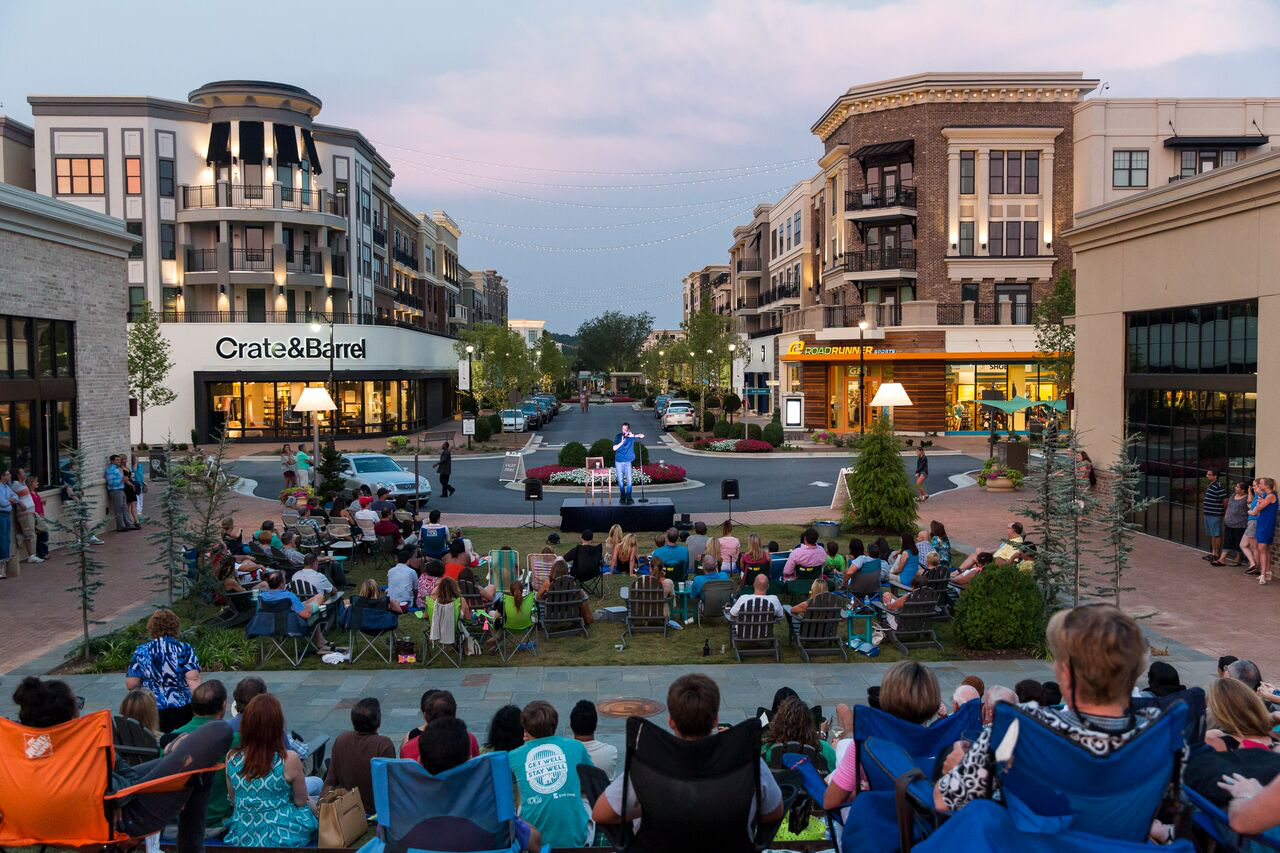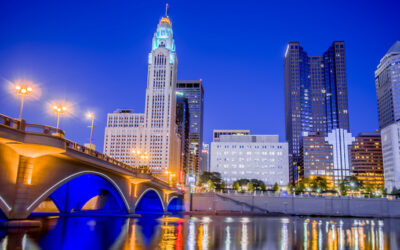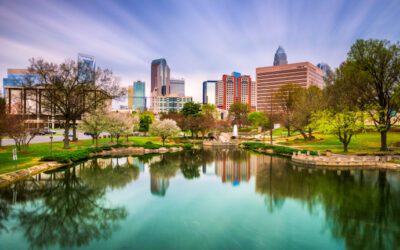Every neighborhood or city within Atlanta has its own distinct personality and flavor, so no matter what you’re looking for – from amenities to walkability to convenience – the metro has something to fit. There are in-town hot spots with lots of activity nearby and and quiet, family-oriented communities outside-the-perimeter, just waiting to be explored.
Thanks to a fast-growing economy and a steady influx of new residents, traffic gridlocks are a way of life here. Savvy Atlantans know that choosing a home base wisely is key to creating the quality of life you want. We recommend making a list of key priorities and do your research. Whether you decide to rent first to get the lay of the land or buy to put down Southern roots, here are some of the best areas in town.
Brookhaven
This newly incorporated (in 2012) in-town city is primarily residential – to the tune of nearly 60 percent. It’s already the largest city in Dekalb County. The neighborhood sprung up in 1910 and became one of the first communities in the Southeast to be built around a golf course. The exclusive Capital City Club is a still a draw for golfers and those looking for country club amenities. The 8.5 square miles that make up Brookhaven are marked by tree-lined streets where you’ll find a mix of older homes and new Craftsman-style builds (often called “McMansions” by those who favor older styles).
Along Dresden Drive, the city’s de facto “Main Street” there are several independently owned restaurants and new apartment developments. The city is also home to Oglethorpe University, a private liberal arts college originally in chartered in 1834. According to The Atlanta Journal-Constitution, approximately 26 percent of residents are young professionals, about 15 percent are between the ages of 55 and 64, and the median household income is approximately $89,000.
Old Fourth Ward
This intown neighborhood, bordered by Piedmont Road and Downtown on the west and Inman Park on the east is just a five minute drive east of Downtown. Though its development began just after the Civil War, it’s experienced a major renaissance in the last decade. Steeped in history, O4W (as it’s abbreviated) is home to the Martin Luther King, Jr. Historical Site and
Marked by industrial and historical buildings that have been newly repurposed into stylish, mixed-use developments. Two shining examples include the 1.1 million-square-foot Ponce City Market (formerly City Hall East and the Sears Roebuck Building) which is home to myriad restaurants, included four owned by James Beard Award-winning chefs, and Krog Street Market, a 9-acre development crafted from the Atlanta Stove Works building. While new builds are popping up, many condos and apartments are crafted out of old industrial buildings, so they suit the landscape of this transitioning neighborhood. Residents love the walkability of the Beltline, a still-in-progress project transforming the 26-mile loop of railroad tracks encircling the city into a connected walking and biking path, lined with native plants. The O4W neighborhood boasts the most refurbished section thus far.
Roswell
This charming town 20 miles north of Atlanta is a favorite for families, thanks to often wide, tree-lined streets and top-rated public schools. Roswell is one of the top 10 largest cities in the state and consistently ranks as one of the best places to live in the whole country. Outside of the older, stately (read: pricey) homes in the Historic Roswell district, many single-family properties are in “swim and tennis” neighborhoods and for those looking to test the waters, apartment communities abound. Roswell High School is ranked in the top 20 in Georgia and the number one in Fulton County.
Outdoor enthusiasts will appreciate the many pet-friendly areas and more than 800 acres of green space, comprised of 18 parks. One of the most popular, Chattahoochee River National Recreation Area, winds along the banks of the Chattahoochee River. Additionally, there are city-sponsored leagues for tennis, soccer, swimming, running and more. Historic Roswell does a great job with community-oriented programming, including “Alive After 5” summer festival series with wine, food trucks and live music and weekend farmers markets. If you’re looking for big city amenities with a smaller city feel, Roswell could be the right fit for you.
Decatur
Decatur is another popular choice for families and for professionals looking for a quaint downtown experience a bit away from the bustle of Atlanta. The county seat of Dekalb County, this picturesque town was founded in 1822. Now, visitors are drawn by its progressive politics, unpretentious vibes, award-winning restaurants, mature trees, and restored historic homes.
Top-rated public schools make it a haven for families willing to pay higher taxes in exchange negating the need for private school tuition. Decatur High School is ranked 13th in Georgia, with Advanced Placement participation topping 78 percent. Decatur also features a highly engaged civic system which even offers a complimentary Decatur 101 class occasionally, which helps new residents get acclimated walking tour + information on history, development, budget, police and fire, emergency management, personnel, volunteer opportunities. The city hosts popular festivals including a BBQ, Blues & Bluegrass and Decatur Book Festival, which draw residents and tourists alike.
Buckhead
“Buckhead” has long been Atlanta’s standard-bearer for all things upscale. It’s home to the Governor’s Mansion, situated among equally palatial homes along West Paces Ferry Road. Atlanta’s two most famous malls, Phipps Plaza and Lenox Square, along with the addition of The Shops Buckhead Atlanta and its ultra-designer labels, mean that Buckhead’s reputation as a shopping destination is secure. While it was once pricey to live here, new apartment developments and condos (for under $150,000) along Peachtree Street are making the “live-walk-work” dream a more affordable reality for many new residents. According to Zillow, the median home price for north Buckhead is still north of $500,000. The median age of residents still hovers around 45 years old for this inside-the-perimeter neighborhood.
Buckhead is also a good place to put down roots as a family. Plenty of private schools (including The Westminster Schools and Pace Academy) along with some top-rated public schools (including the new North Atlanta High School Campus, which came with a $147 million price tag in 2013) mean there are options for savvy-parents. With a tightly packed collection of luxury hotels – The Ritz-Carlton Buckhead, The Grand Hyatt, The St. Regis and Mandarin Oriental Atlanta – there are many accessible places for out-of-town guests to stay when they come visit. Buckhead is still a mecca for some of the best restaurants in town, from steak to seafood to Southern.
Vinings
Just west and across the Chattahoochee River from Atlanta lies Vinings, an unincorporated town Cobb County. Many residents are drawn here for Vinings’ small-town feel and close proximity to all of Atlanta’s big-city offerings. Its modern history dates back to the 1830s, when developer Hardy Pace paved the way for future progress. The still-visible railroad tracks, laid through the area by the Western and Atlantic Railroad Companies helped make Atlanta the transportation hub it is today.
The population of Vinings hovers around 10,000 and prices for single-family homes hover around $150 per square foot ($360,000 is the median listing price). Townhouse communities, condominiums and ample apartments make this area accessible to buyers and renters at a variety of price points. Because the Vinings area stretches across the Cumberland Interchange – which connects I-285 and I-75 – the area is convenient to employment in Atlanta and to the north (including Dobbins Air Force Base and Lockheed Martin, both big employers).
Virginia-Highland
This quaint historic community features terrific walkability, tree-lined streets and charm to spare. Often shortened to “VaHi” by locals, it was developed in the early 1900s as a streetcar suburb of Atlanta, though in reality, it’s only a five-minute drive from downtown (on a good traffic day). The name comes from the intersection of Virginia and Highland Avenues, both of which are lined with charming bungalow homes and, increasingly, new builds in the same style. While larger chain apartment complexes are scarce, older multi-unit condo and apartment buildings are peppered among single-family residents, making it more affordable to get into the neighborhood.
On the main thoroughfare of North Highland Avenue features independent boutiques, yoga studios, salons coffee shops, bars and restaurants. It’s a popular destination for locals who love the convenience and tourists who come to shop and dine. The active Virginia Highland Civic Association organizes an annual Tour of Homes and Summerfest, a music and arts festival that takes over several city blocks.
Emory
Emory University is used to being at the top of lists – for its excellent undergraduate, business and medical schools, as well as for the beauty of its campus – but the area surrounding it is tops for accessibility to Atlanta and quality of life. While this isn’t a “neighborhood” per se, the advantages of living close to a stunning, historic college campus has its advantages. In addition to quiet green space (peppered with students studying), anyone can take advantage of the rambling 154-acre Lullwater preserve, which features a lake, suspension bridge and trails. While it’s difficult to purchase a single-family home without a sizeable budget, reasonably priced apartments and carriage house rentals abound.
This area is a popular destination for academics, medical professionals and scientists (the Centers for Disease Control locations are within a few minutes’ drive). Excellent medical care is close by as well. Residents are in close proximity to top-rated Emory Healthcare, the largest healthcare system in the country, and Egleston, part of Children’s Healthcare of Atlanta.
Alpharetta
This friendly suburb lies 26 miles north of Atlanta, straight up Georgia State Route 400, and is a popular area for growing families and those looking for more home for their money (versus inside the perimeter). In fact, Alpharetta sprung up out of rolling farmland and greater than 90% of homes were built in 1980 or later. The 2012 census named it the sixth fastest-growing city in the United States, due in part its infrastructure creating a friendly environment for start-ups and small businesses. It’s currently home to more than 600 technology businesses.
The well-managed public school system in Alpharetta is also a major draw, with the massive public high schools boasting a graduation rate of 95.5%. Afraid to leave the activity of in-town living behind? You don’t need to wander far for great entertainment, thanks in part to Verizon Wireless Amphitheater at Encore Park, which draws top musical talent and the new $600 million Avalon Development, which includes a 12-screen movie theater, more than 100 single-family homes, 250 apartments, top boutiques and high-end restaurants.
